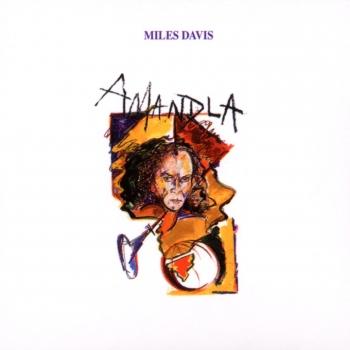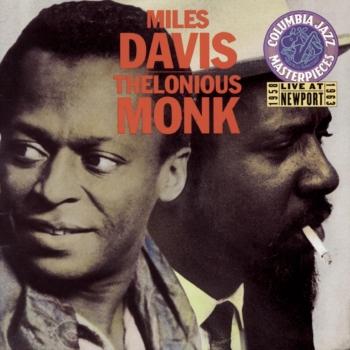
Doo-Bop (Remastered) Miles Davis
Album info
Album-Release:
1991
HRA-Release:
30.06.2012
Label: Warner Music Group
Genre: Jazz
Subgenre: Crossover Jazz
Artist: Miles Davis
Composer: Miles Davis, Easy Mo Bee
Album including Album cover
I`m sorry!
Dear HIGHRESAUDIO Visitor,
due to territorial constraints and also different releases dates in each country you currently can`t purchase this album. We are updating our release dates twice a week. So, please feel free to check from time-to-time, if the album is available for your country.
We suggest, that you bookmark the album and use our Short List function.
Thank you for your understanding and patience.
Yours sincerely, HIGHRESAUDIO
- 1 Mystery 04:46
- 2 The Doo-Bop Song 03:59
- 3 Chocolate Chip 05:07
- 4 High Speed Chase 04:41
- 5 Blow 04:44
- 6 Sonya 05:12
- 7 Fantasy 05:34
- 8 Duke Booty 04:40
- 9 Mystery (Reprise) 04:58
Info for Doo-Bop (Remastered)
This is the recording Miles Davis was working on when he checked into the hospital in mid-September of 1991. With his passing on the 28th of September, a major epoch in American music came to a close. Somewhere in the back of his mind he probably knew that he was living on borrowed time, because earlier that summer he'd finally consented to make a nostalgic return to the classic music that emerged from his collaborations with Gil Evans (MILES & QUINCY AT MONTREAUX). But as the contemporary sounds of DOO-BOP indicate, Miles Davis was incapable of sustained backwards glances.
As the rapology of J.R., A.B. Money and Easy Mo Bee on 'The Doo-Bop Song,' 'Blow' and 'Fantasy' indicates, Miles and his collaborators were still feeling each other out in terms of themes and context. The raps revolve around hangin' with the legendary Davis--let's dim the lights and get down with my man Miles. In terms of dance tracks, the Afro-Cuban airs of 'Blow' make it the most successful, while 'Fantasy' re-visits Clyde Stubblefield's much sampled 'Funky Drummer' beat--via the 'Red Clay' chord changes--with hip-happy results.
But many of the funky arrangements are a bitch, and Miles sounds funky, lyrical and relaxed. 'Chocolate Chip' recalls the ancient doo wop and R&B antecedents of modern funk, including a nod to James Brown, while 'Duke Booty' presents the modern perspective on funk. And 'High Speed Chase' anticipates the current acid jazz fascination with cool blues and boogaloo grooves of the Blue Note and CTI studio styles, as Miles blows bumblebee lines over fatback organ, vibes and a variety of street sounds.
'...a collector's piece...it is as hip, sexy, open and complex as the best of his work since he elected to turn to FM airplay music in the 1980's...' (B-Q)
'...This is a hip hop record....For younger ears weaned on modern beats, it's an inviting opening into one of the great cornucopias of American music....Like most everything Miles played, the music of DOO-BOP is cool and warm, beautiful and true...' (Musician Magazine)
Miles Davis, trumpet
Kei Akagi, keyboard
Deron Johnson, keyboard
A.B. Money, vocals
J.R., vocals
Easy Mo Bee, rap vocals
Producer: Easy Mo Bee
Recorded at Unique Recording, New York, New York
Engineers: Kirk Yano, Bruce Moore, John McGlain
Digitally remastered in 2011.
Trumpeter Miles Davis grew up in East St. Louis, Illinois, just across the river from St. Louis, Missouri. His parents were affluent, and had the means to support his musical studies as a boy. He began playing the cornet at age nine, and received his first trumpet at around twelve or thirteen. He studied classical technique, and focused mainly on using a rich, clear tone, something that helped define his sound in later years.
As a teenager, he played in various bands in St. Louis, which was rich with jazz, as big bands often stopped there on tours throughout the Midwest and southern states. The most important experience he had was when he was asked to play in the Billy Eckstine band for a week as a substitute. The group included Charlie Parker, Dizzy Gillespie, and Sara Vaughan. After playing with these stars, Davis knew he had to move to New York to be at the heart of the jazz scene.
In Pursuit of Parker:
In 1944 Davis moved to New York City where he had earned a scholarship to study trumpet at the Juilliard School of Music. Upon arriving however, he sought after Charlie Parker, and meanwhile spent all of his time in jazz clubs listening to bebop. He was transfixed on the music, and grew utterly bored with his classical studies. After less than a year at Juilliard, he dropped out and tried his hand at performing jazz.
Although not particularly stunning, his playing was good enough to finally attract Charlie Parker, and Davis joined his quintet in 1945. He was often criticized for sounding inexperienced, and was compared unfavorably to Dizzy Gillespie and Fats Navarro, who were the leading trumpeters at the time. Both boasted stellar technique and range, neither of which Davis possessed. In spite of this, he made a lasting impression on those who heard him, and his career was soon set aloft.
Cool Jazz and a Rise to Fame:
Encouraged by composer and arranger Gil Evans, Davis formed a group in 1949 that consisted of nine musicians, including Lee Konitz and Gerry Mulligan. The group was larger than most bebop ensembles, and featured more detailed arrangements. The music was characterized by a more subdued mood than earlier styles, and came to be known as cool jazz. In 1949 Davis released the album Birth of the Cool (Captiol Records).
Change of artistic direction became central to Davis’ long and increasingly influential career. After dabbling in hard bop as a leader on four Prestige recordings featuring John Coltrane, he signed with Columbia records and made albums that featured Gil Evans’ arrangements for 19-piece orchestra. These were Miles Ahead, Porgy and Bess, Sketches of Spain, and Quiet Nights. He rose in popularity with these recordings, in part due to his signature sound, which he often enhanced by using a Harmon mute.
Kind of Blue and Beyond:
In 1959 Davis made his pivotal recording, Kind of Blue. It was a departure from all of his previous projects, abandoning complicated melodies for tunes that were sometimes only composed of two chords. This style became known as modal jazz, and it allows the soloist expressive freedom since he does not have to negotiate complex harmonies. Kind of Blue also featured John Coltrane, Cannonball Adderley, and Bill Evans. The album is one of the most influential in jazz, and is Columbia Records’ best-selling jazz record of all time.
In the mid 1960s Davis changed directions again, forming a group with Herbie Hancock, Wayne Shorter, Tony Williams, and Ron Carter. This group was known for the excellence of each individual member, and also for its unique performance approach. Each night the tunes would sound different, as the musicians would sometimes only loosely adhere to the song structures, and often transition from one right into the next. Each player was given the chance to develop his solos extensively. Like all of Davis’ previous groups, this quintet was highly influential.
Late Career:
Despite health problems, drug addiction, and strained personal relationships, Davis continued to play, changing his approach with each new project. In the late 60s and 70s, he began to experiment with electronic instruments, and grooves that were tinged with rock and funk music. Two famous recordings from this period are In a Silent Way and Bitches Brew. By the time the 1980s rolled around, Davis was not only a jazz legacy, but a pop icon, whose music, persona, and fashion style were legendary.
Davis died in 1991, as perhaps the most influential jazz artist ever. His vast body of work continues to be a source of inspiration for today’s musicians. (Jacob Teichroew, About.com Guide)
This album contains no booklet.






































